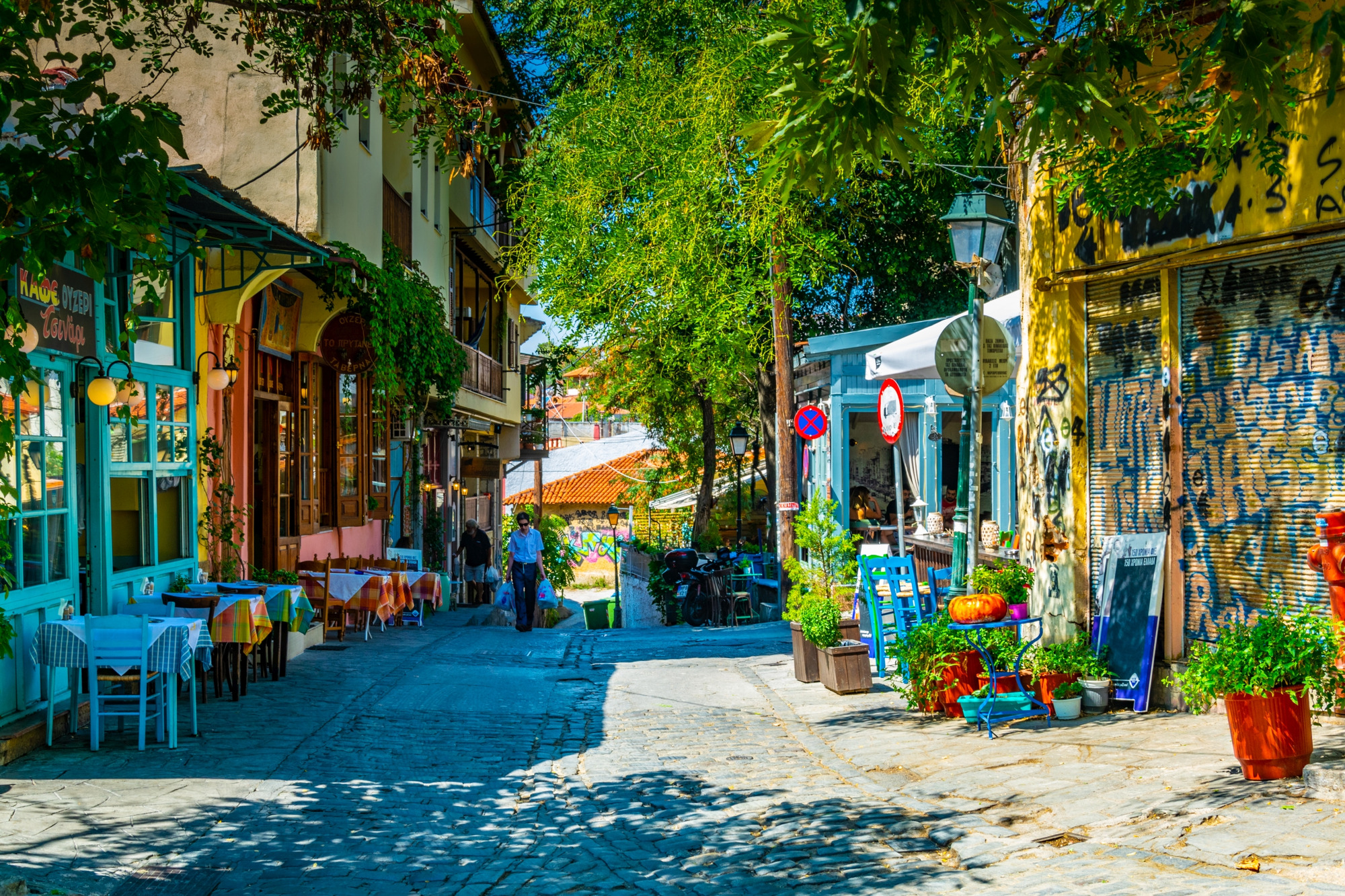
Tsinari
Tsinari
Thessaloniki of the 19th-century through its narrow alleys and low houses
The northwestern part of Ano Poli, which extends above the Government House and Olympiados Street, still retains its Turkish name 'Tsinari' from the plane tree ('çınarlı') that stood in its central square. This area preserves its traditional character in the architecture of its houses and streets, as it was the only part of Thessaloniki that survived the 1917 fire that had destroyed almost the entire city.
Walking through its narrow alleys, the 'kalderimia,' with dead-ends and lanes that ascend and descend towards and from the Castles, gives the impression of a journey back in time, as if you find yourself in a city of the 19th century, just a few hundred meters away from the bustling center of the modern metropolis. The plane tree that gave its name to the neighborhood provided shade to the oldest public Ottoman fountain in Thessaloniki, known as the 'Fountain of Murat II,' which still refreshes passers-by today. The homonymous café-tavern has been operating there since 1885 in a building considered the last surviving example of a shop from that Ottoman period.
Roaming around Tsinari, visitors will be filled with images of another Thessaloniki. Colorful, vibrant, historical, and folkloric, with one building displaying Macedonian and Balkan architecture, and the next one showcasing Ottoman-era monuments like the Church of Agia Aikaterini, a UNESCO World Heritage Site dating back to the 14th century. It is one of the best walks in the city, always having the sea and the city center in sight."



